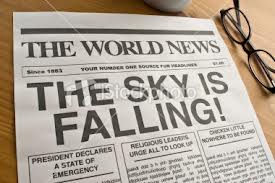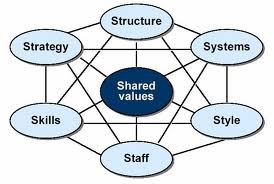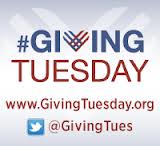 When I hear one donor say something once, I chalk it up to something interesting. When I hear two donors say the same thing, I usually think it is an interesting occurence. However, when three or more donors express the same sentiment, I sit up . . . take notice . . . and treat it like a potential trend.
When I hear one donor say something once, I chalk it up to something interesting. When I hear two donors say the same thing, I usually think it is an interesting occurence. However, when three or more donors express the same sentiment, I sit up . . . take notice . . . and treat it like a potential trend.
Since the Presidential election was decided more than a month ago, I’ve more than three donors say alarming things about the state of philanthropy in this country. Here is some of what I am hearing:
- “Congress and the President won’t agree on the fiscal cliff negotiations. We’re going off the fiscal cliff, and charitable contributions will go down.”
- “Obama wants to get rid of people’s charitable tax deductions, and this will result in a reduction in donations.”
- “The Bush tax cuts on the wealthiest Americans will be allowed to expire, which means wealthy Americans will stop giving to charities.”
- “Congress and the President will go off of the fiscal cliff. Everyone’s taxes will go up. Another recession will surely result, and charitable giving will dip as a result.”
I am not exaggerating. There are a number of donors and non-profit board members with whom I have spoken in the last month that think the sky is falling.
At first, I thought this talk was the result of Republican donors being unhappy about a Obama re-election. However, I’m beginning to re-think this original opinion. I honestly think people are getting scared.
There are multiple reasons for this hysteria and probably include a 24-hour media cycle, political rhetoric, etc. Regardless, the ‘WHY’ doesn’t matter . . . non-profit professionals need to focus on ‘WHAT’ they should be doing and saying.
 While fear is irrational, it definitely impacts human behavior. I believe most students learn this in Psychology 101. So, if people “think” the sky is falling, it is falling regardless of the facts.
While fear is irrational, it definitely impacts human behavior. I believe most students learn this in Psychology 101. So, if people “think” the sky is falling, it is falling regardless of the facts.
You can passively sit by and let your donors and board members whip themselves into a frenzy, or you can be a responsible non-profit professional and do something about it.
I have always believed that an “ounce of prevention is worth a pound of cure”. In this instance, I believe that good non-profit professionals will inject a calm and reassuring voice into any local discussion being had with board members or donors.
Of course, being calm and reassuring is easier said than done, and it requires a firm grasp of facts. Unfortunately, the facts shift and change and are subject to interpretation. However, I was very encouraged when I saw that BoardSource is hosting a webinar featuring Tim Delaney, CEO of the National Council of Nonprofits. He will speak to the issue of fiscal cliff, capping deductions, etc.
THIS WEBINAR IS SCHEDULED FOR TODAY (WEDNESDAY, DECEMBER 12, 2012) AT 2:30 PM CST, BUT IT LOOKS LIKE YOU CAN STILL REGISTER BY CLICKING HERE AND FOLLOWING THIS LINK.
Once you get some of the facts about the issues, you should feel more comfortable participating in these type of conversations when they come up with donors and volunteers.
 Here are a few quick tips you may want to remember when jumping into these discussions:
Here are a few quick tips you may want to remember when jumping into these discussions:
- Don’t express partisan opinions. Stick with the facts about what is being discussed. I encourage steering clear of expressing an opinion on what you think the impact will be. Put the crystal ball away!
- Be reassuring and express confidence that these things always work themselves out in the end. History proves this to be true time-and-time-again.
- Remind donors that tax considerations are rarely a motivating factor in most people’s charitable decisions. Donors give to good causes with good missions. Tax considerations (if they are even in the equation) are frequently a final factor and contribute to size of gift and rarely on whether or not to give.
- No one can predict the future, and getting all worked up about something we can’t control is an exercise in futility. All we can control is our own actions .(e.g. who do we ask now, for how much as we asking, when are we asking, etc). Let’s remain focused so we don’t accidentally get swept up in something that doesn’t yet exist.
Are you hearing some of your donors and board members wring their hands over this policy debate in Washington D.C.? If so, what are you doing to make sure your year-end giving isn’t negatively impacts? Are you doing anything at all? Are you remaining silent?
If you end up attending the BoardSource webinar today, please circle back and share a few of the details in the comment box below. If you can’t attend, please weigh-in with your thoughts on the the questions I just posed or any of the ideas I just expressed.
Here’s to your health!
Erik Anderson
Founder & President, The Healthy Non-Profit LLC
www.thehealthynonprofit.com
erik@thehealthynonprofit.com
http://twitter.com/#!/eanderson847
http://www.facebook.com/eanderson847
http://www.linkedin.com/in/erikanderson847

 This morning I am asking for your help with a small project I am working on. A few weeks ago I agreed to help one of my favorite non-profit organizations with a staff transition. Not only did their development director move on to greener pastures at the end of the summer, but their executive director also recently resigned. So, the board asked me to step into the void and help their management team with a variety of year-end miscellaneous projects (e.g. year-end holiday mailing, 2013 budget construction, resource development plan, etc).
This morning I am asking for your help with a small project I am working on. A few weeks ago I agreed to help one of my favorite non-profit organizations with a staff transition. Not only did their development director move on to greener pastures at the end of the summer, but their executive director also recently resigned. So, the board asked me to step into the void and help their management team with a variety of year-end miscellaneous projects (e.g. year-end holiday mailing, 2013 budget construction, resource development plan, etc). This question was inspired by a string of two or three grants in a row that this organization had just written. As a businessman, he asked this question because he is accustom to looking at everything through a “return on investment” (ROI) lens. In hindsight, this is what he saw:
This question was inspired by a string of two or three grants in a row that this organization had just written. As a businessman, he asked this question because he is accustom to looking at everything through a “return on investment” (ROI) lens. In hindsight, this is what he saw: Seriously, your feedback this morning will directly help another organization in its pursuit of developing fundraising best practices. Your participation will take all of a minute or two this morning. Please weigh-in. Your collective wisdom is massive and will bring tremendous value to this organization’s discussion. You can consider the few minutes that you invest in responding to this request as your “good turn” this holiday season. Please pay it forward!
Seriously, your feedback this morning will directly help another organization in its pursuit of developing fundraising best practices. Your participation will take all of a minute or two this morning. Please weigh-in. Your collective wisdom is massive and will bring tremendous value to this organization’s discussion. You can consider the few minutes that you invest in responding to this request as your “good turn” this holiday season. Please pay it forward! For the last few weeks, I’ve found myself in a number of non-profit boardrooms talking to board volunteers about a variety of difficult subjects. These difficult conversations covered the following areas uncomfortable areas: staff reduction, re-organization, service reduction, radical revenue enhancement, board transformation, and so on. In each instance, it felt like a “soul-searching” discussion . . . very big and very weighty. I found myself wishing for a magic pill that I could dispense that would make their path forward a little less difficult.
For the last few weeks, I’ve found myself in a number of non-profit boardrooms talking to board volunteers about a variety of difficult subjects. These difficult conversations covered the following areas uncomfortable areas: staff reduction, re-organization, service reduction, radical revenue enhancement, board transformation, and so on. In each instance, it felt like a “soul-searching” discussion . . . very big and very weighty. I found myself wishing for a magic pill that I could dispense that would make their path forward a little less difficult. So, one organizations might find some comfort in their shared values of:
So, one organizations might find some comfort in their shared values of:












